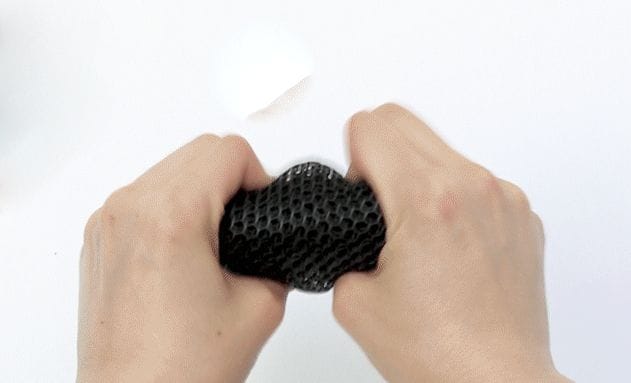![A new materials option at Shapeways [Source: Shapeways]](https://fabbaloo.com/wp-content/uploads/2020/05/image-asset_img_5eb09be4dc59a.jpg)
Shapeways’ new material shows how tight the relationship between 3D print service bureaus and 3D printer manufacturers can be.
The popular 3D print service and marketplace was one of the first to offer 3D print services to the public, and is still frequently mentioned as one of the notable services providing 3D print services. From the beginning, they offered the ability to upload a 3D model and obtain a print, or select a 3D model for printing from their vast collection.
Over the years they’ve gradually added to the list of possible materials available from their service. Initially their service included a basic plastic material and a sandstone-like material able to display full color surface textures. Due to the then-high cost of full color 3D printers, Shapeways was often the go-to source for those requiring occasional full color prints.
Since then the company has added the ability to 3D print in a variety of metals, which, when combined with their extensive jewelry 3D models, allowed anyone in the public to easily 3D print highly unusual jewelry designs.
Today they’re announcing a new addition to their materials list: Elastomeric Polyurethane, a very tough and flexible material.
If that material sounds familiar, it should, as it is one of Carbon’s materials.
It turns out that Shapeways has partnered with Carbon to use their equipment in the production of print requests to Shapeways. Thus Shapeways users now have access to not only Elastomeric Polyurethane (a.k.a. EPU 40), but other Carbon materials as well, notably including:
-
Rigid polyurethane (RPU 70), a versatile, tough and rigid material — great for consumer products, classified UL 94 HB flame resistant
-
Urethane methacrylate (UMA 90), a tough, rigid resin similar to conventional SLA — used to manufacture jigs and fixtures
Of course, Carbon offers plenty more materials beyond these three, but it seems that the arrangement between Shapeways and Carbon will initially offer only these. However, it is highly likely that the materials scope will increase over time.
The Carbon / Shapeways program shows the very tight relationship between a 3D print service bureau and its equipment suppliers. A 3D print service can only provide materials that are usable in the equipment they have access to. Thus, it is often possible to determine which type of 3D printers operate at a service bureau simply by examining the available materials.
When we visited Shapeways’ Brooklyn site years ago we saw EOS machines, 3D Systems SLA machines, and Z Corp machines, all using materials matching Shapeways’ then-current materials offering. Carbon now joins that list of equipment, and brings along all its materials.
One practice that readers may not be aware of is that sometimes 3D print service bureaus do not actually operate their own equipment. In some cases a service provider may want to offer a capability, but not know if sufficient demand will emerge to warrant purchasing its own equipment. In such situations, the service bureau may make an arrangement with another party who does operate the necessary equipment and have them outsource the printing. Sometimes the partner is the equipment manufacturer itself.
Eventually if the new materials prove popular, the 3D print service bureau may be able to financially justify acquisition of its own equipment. It’s our understanding that Shapeways itself actually began operations many years ago in this mode, gradually growing to its current state.
For today’s announcement with Carbon, it is unclear whether Shapeways will operate their own Carbon gear, or whether the prints will be produced by Carbon itself. But really, this doesn’t matter for Shapeways users — they still request a print and get one.
Via Shapeways











MakerOS has a brilliant hidden feature in their online service: a sophisticated 3D print pricing calculator that allows operators to determine exactly how to price prints.